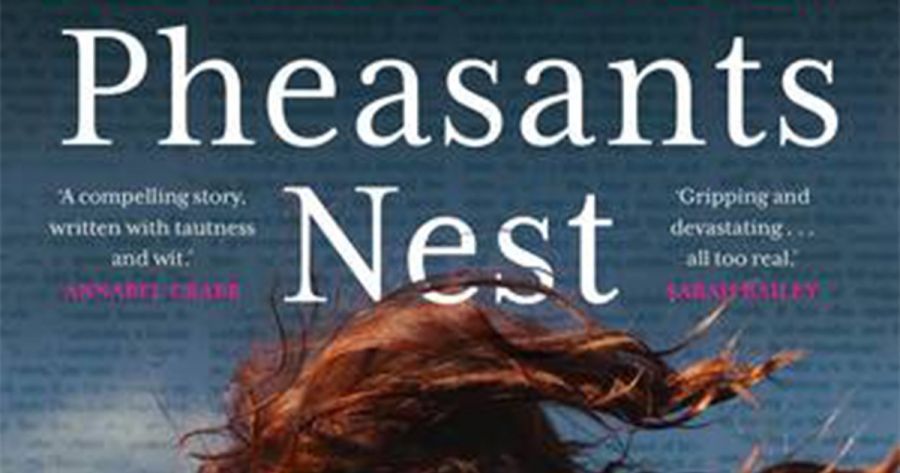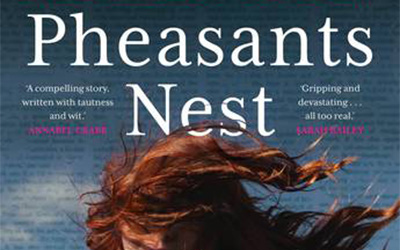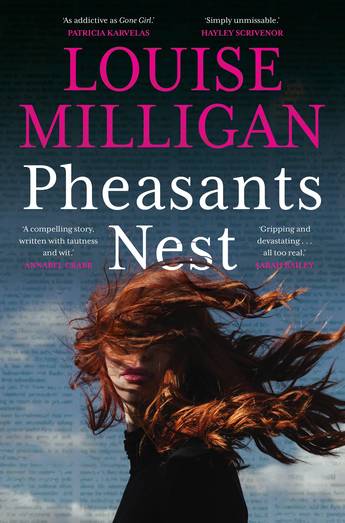
- Free Article: No
- Contents Category: Fiction
- Review Article: Yes
- Article Title: Reverberating violence
- Article Subtitle: Louise Milligan’s fiction début
- Online Only: No
- Custom Highlight Text:
A mid-career genre change is always cause for attention. Best known for her fearless investigations into institutional sexual abuse, it is hardly surprising that Louise Milligan should transfer her journalistic nous and commitment to social justice into the realm of crime fiction. Pheasants Nest is part of a movement in post-#MeToo crime fiction, which has flourished in Australia and abroad in the past decade. It challenges the norms of the genre to centre victims and amplify the reverberations of violence against women (recent examples include Jessica Knoll’s Bright Young Women and Jacqueline Bublitz’s Before You Knew My Name).
- Featured Image (400px * 250px):

- Alt Tag (Featured Image): Laura Elizabeth Woollett reviews ‘Pheasants Nest’ by Louise Milligan
- Book 1 Title: Pheasants Nest
- Book 1 Biblio: Allen & Unwin, $32.99 pb, 312 pp
- Book 1 Cover Small (400 x 600):

- Book 1 Cover (800 x 1200):

Kate is also, like Milligan (and Meagher), Irish-born – a fact that contributes to both her character and her gothic conception of traditional Dharawal and Gundungurra land. While Kate’s sense of outsiderhood in Australia and her white woman’s fear of the bush could have been explored more acutely, Milligan effectively contrasts the natural fertility of the land with the refuse of settlement: ‘One of those old-school Neapolitan ice-cream containers […] half full of muddy water. A soiled disposable nappy in a plastic bag. A rather nasty-looking black dildo.’
While the novel begins in the backseat of the vehicle in which Kate’s rapist is hurtling away from the site of her opportunistic assault, this Black Water-esque claustrophobia is forfeited in favour of a roving perspective. Milligan jumps beyond Kate to her rapist, her boyfriend Liam, two policemen, her best friend Sylvia, and her would-be sister-in-law Mandy. This expanded scope allows Milligan to show off her understanding of police procedure and explore various masculinities: the violent misogynist; the sensitive city boy; the PTSD-afflicted country cop. Yet the novel often feels hampered by an excess of backstory combined with lukewarm attempts at humour, such as Sylvia dropping off her toy dog at her mother’s house before hitting the road to chase leads.
How to handle the characterisation of a violent misogynist – and the extent to which such men should be characterised at all – is a central challenge of victim-centric crime fiction. Milligan follows predecessors such as Knoll by leaving Kate’s abductor nameless, referring to him simply as ‘the Guy’. However, the Guy is a recognisable ‘type’: a gym-junkie and self-identified ‘bogan’, who sees women as types (namely, ‘bogans’ and ‘mods’). He is also recognisably dim, the kind of criminal who, after raping a woman, shoves her in his backseat without disposing of her cell phone.
Although the Guy’s lack of intelligence is not unrealistic – white male criminals often get away with a lot, through sheer force of privilege and police incompetence – it often detracts from his menace. It takes some suspension of belief to accept that a man who is capable of violating a woman just because she turned him down in a humiliating manner would baulk at killing her (see Margaret Atwood: ‘Men are afraid of women laughing at them. Women are afraid that men will kill them’). Likewise, Kate’s assurance of her intellectual and cultural superiority seems somewhat overstated, within the context (she bristles at being offered Pringles to eat while starving, for example).
Moreover, Kate’s sense of cultural superiority introduces a shadow of classism, which extends beyond the Guy. Kate is what the Guy calls a ‘mod’ (basically, a chick who reads and listens to Morrissey) – a type that he considers to be above his station, unlike his ex or the stripper that he has previously assaulted. Although these hierarchies undeniably exist in society, and impact the ways that crimes are investigated, prosecuted, and portrayed in the media, their persistence in the mind of Milligan’s heroine is relatively unexamined. There are some striking moments in which Kate reflects on the optics of victimhood, such as her difficulty finding a photo of a brutalised nineteen-year-old that ‘didn’t make the poor thing look comical and vain’. I can’t help thinking that there is a more interesting novel nesting within Pheasants Nest, one that expands on these moments to critique the ways that the inner-city media elite may be complicit in the construction of some victims as more worthy of justice and compassion than others.
Nevertheless, Milligan’s efforts to raise up her victim-protagonist and those most impacted by her abduction are commendable, and an improvement on narratives that implicitly lionise violent men by presenting them as more mysterious and crafty than they actually are. Pheasants Nest also poses some important questions with regards to sexual desire in the wake of violation, through the space it gives to Kate and Liam’s rose-tinted relationship, though these questions remain largely unresolved.


Comments powered by CComment